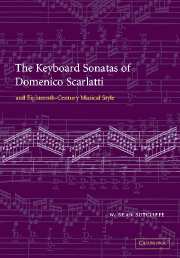4 - Syntax
Published online by Cambridge University Press: 22 September 2009
Summary
REPETITION AND RATIONALITY
What are we to make of a tonal language that appears to privilege rhythm over harmony? In the keyboard sonatas of Scarlatti the exploration of rhythm – or, more broadly understood, the exploration of syntax – would seem to take priority over harmonic considerations as such. The identikit image of a Scarlatti sonata would involve generous reiterations of short phrase units against a relatively lightweight harmonic background, but a general impression of animation does not amount to the privileging of rhythm one might claim for the composer. Rather, it is simply a part of a larger campaign in which all elements of normative syntactical patterning are open to investigation. Inevitably, these will turn around the matter of degrees of repetition.
Repetition at some level or other is of course an essential precondition for the existence of music, for it to be recognized as constituting an artistic statement. In Western art music we can account for it most comfortably when it fulfils certain roles or fits with certain models. For instance, it may be present in the name of a larger symmetrical whole: thus an antecedent phrase is matched by a consequent to make up the larger unit known as a period; an immediate repetition of a shorter unit followed by an elaboration of the same constitutes a sentence; on a higher level larger sections can be repeated to give us ABA form or rondo form.
- Type
- Chapter
- Information
- Publisher: Cambridge University PressPrint publication year: 2003

